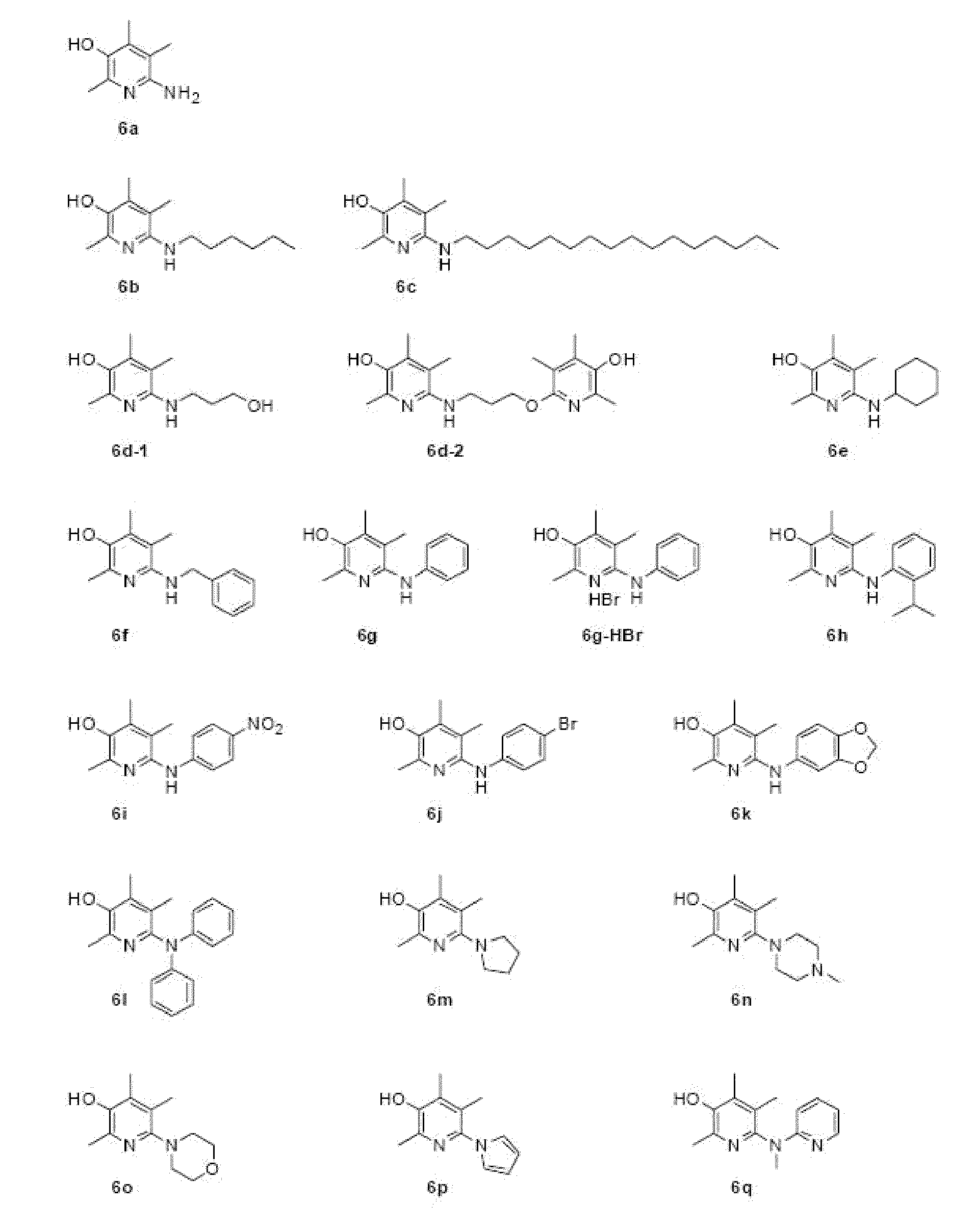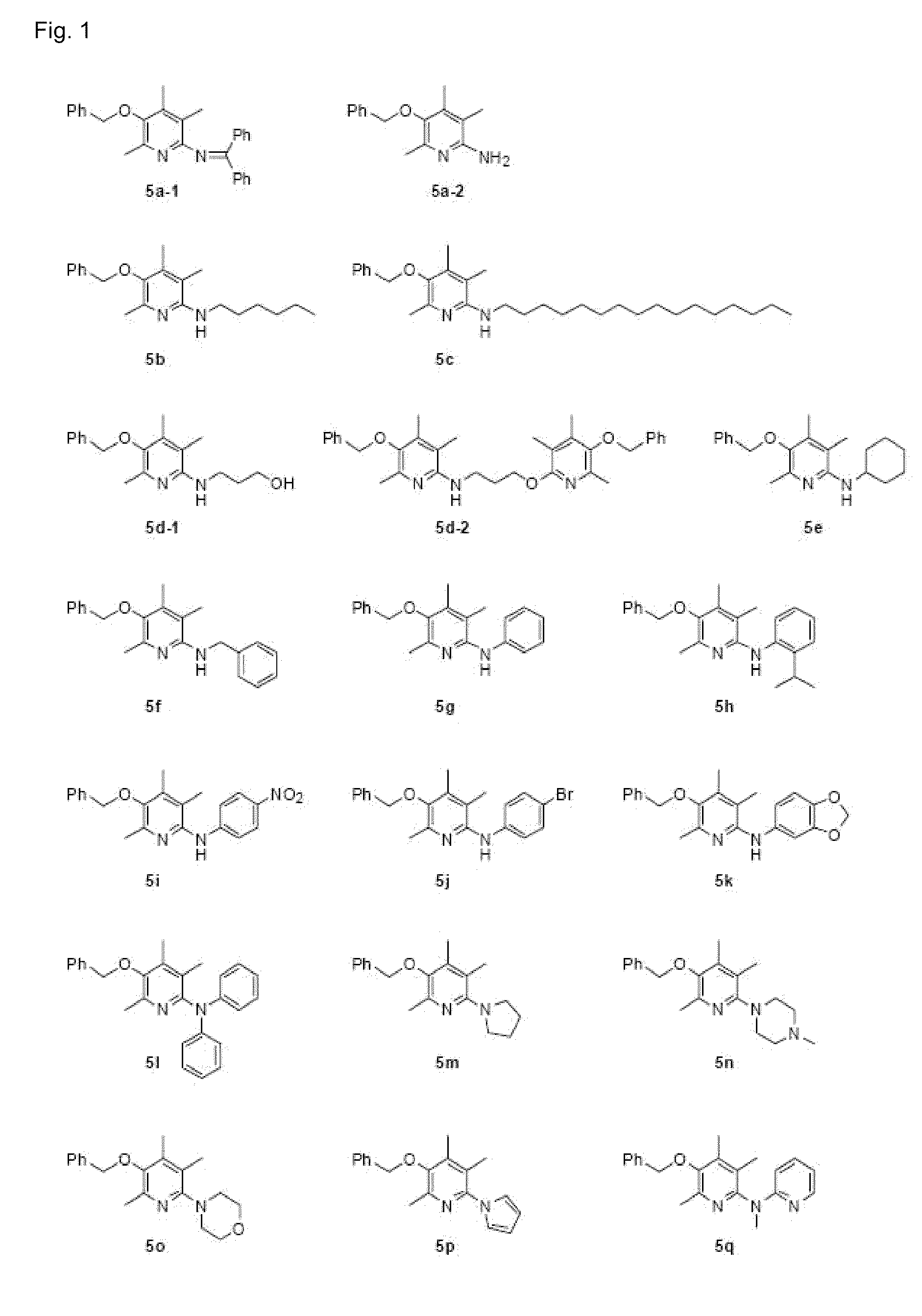6-aminopyridine-3-ol derivatives or pharmaceutically acceptable salts thereof, and pharmaceutical composition containing same as active ingredients for preventing or treating diseases caused by angiogenesis
a technology of angiogenesis and derivatives, which is applied in the direction of drug compositions, cardiovascular disorders, immunological disorders, etc., can solve the problems of insufficient autonom control of angiogenesis, poor separation of fibroblasts, and very slow growth of endothelial cells, and achieve the effect of increasing angiogenesis
- Summary
- Abstract
- Description
- Claims
- Application Information
AI Technical Summary
Benefits of technology
Problems solved by technology
Method used
Image
Examples
embodiments
[0058]Hereinafter, embodiments of the present invention will be described herein. However, the embodiments do not limit the present invention.
example 1
Synthesis of 4,5-bis(chloromethyl)-2-methylpyridin-3-ol hydrochloride; 1
[0059]SOCl2 (30 mL) and DMF (0.2 mL, 2.583 mmol) were added to pyridoxine.HCl (5 g, 24.31 mmol), and then, the mixture was refluxed while stirring at a temperature of 80° C. for 3 hours. The reaction solution was cooled to room temperature, and then, Et2O (70 mL) was added thereto, and the result was stirred for 1 hour under ice cooling. Precipitated solid was filtered under reduced pressure, and the filtered solid was washed with Et2O and then dried to obtain Compound 1 (5.5 g, 93%) in the form of white solid.
[0060]1H-NMR (250 MHz, DMSO-d6) δ 8.42 (s, 1H), 4.99 (s, 2H), 4.96 (s, 2H), 2.63 (s, 3H) ppm.
example 2
Synthesis of 2,4,5-trimethylpyridin-3-ol; 2
[0061]Zinc powder (8.08 g, 123.69 mmol) was separately added in small portions to an acetic acid (50 mL) suspension of Compound 1 (10 g, 41.23 mmol), and then, the mixture was refluxed while stirring at a temperature of 130° C. for 2 hours. The reaction solution was cooled to room temperature, and then filtered under reduced pressure, and a pH of the residual was controlled to be 6 by using a 10 M NaOH solution. Then, the residual was saturated with salt and extracted with EtOAc (100 mL×6). The EtOAc solution was washed with the saturated saline water, followed by drying with MgSO4, filtering, and concentrating under reduced pressure. The residual was purified by column chromatography (CHCl3:MeOH=20:1) to obtain Compound 2 (5.2 g, 92%) in the form of white solid.
[0062]1H-NMR (250 MHz, DMSO-d6) δ 8.49 (s, 1H), 7.72 (s, 1H), 2.31 (s, 3H), 2.12 (s, 3H), 2.08 (s, 3H) ppm.
PUM
 Login to View More
Login to View More Abstract
Description
Claims
Application Information
 Login to View More
Login to View More - R&D
- Intellectual Property
- Life Sciences
- Materials
- Tech Scout
- Unparalleled Data Quality
- Higher Quality Content
- 60% Fewer Hallucinations
Browse by: Latest US Patents, China's latest patents, Technical Efficacy Thesaurus, Application Domain, Technology Topic, Popular Technical Reports.
© 2025 PatSnap. All rights reserved.Legal|Privacy policy|Modern Slavery Act Transparency Statement|Sitemap|About US| Contact US: help@patsnap.com



